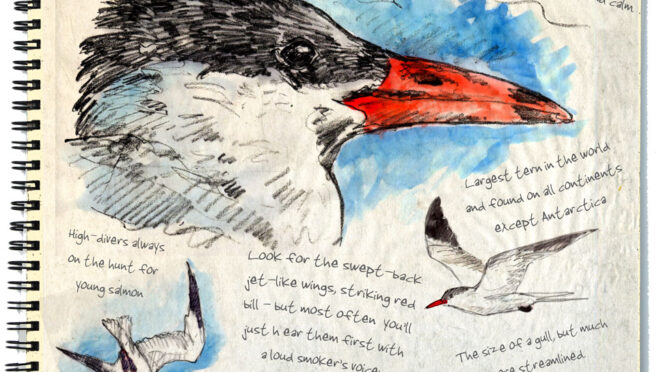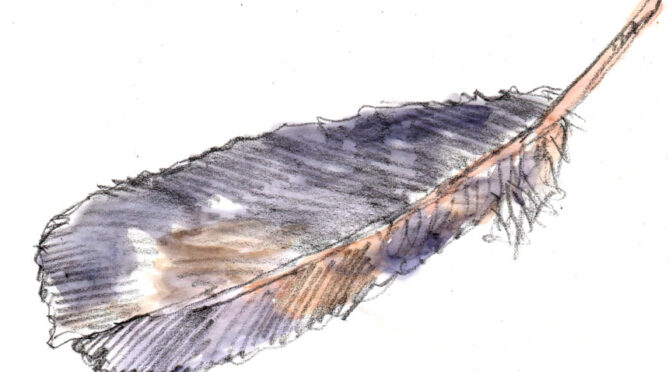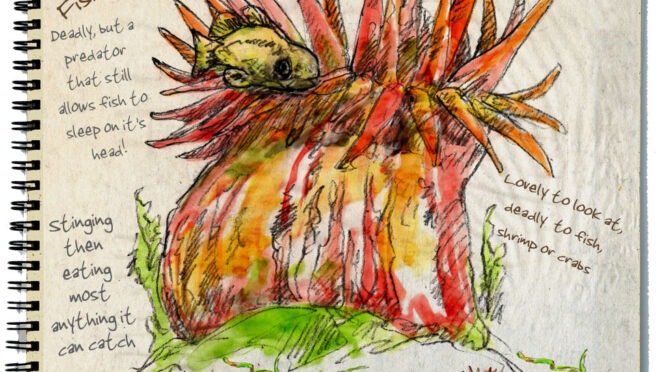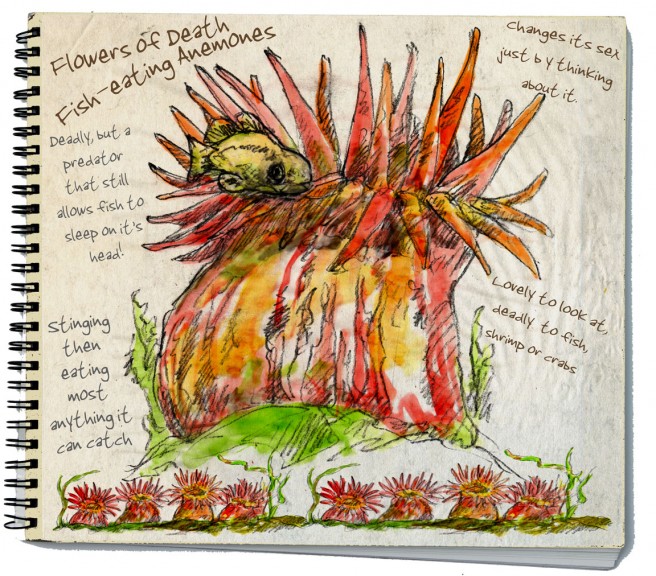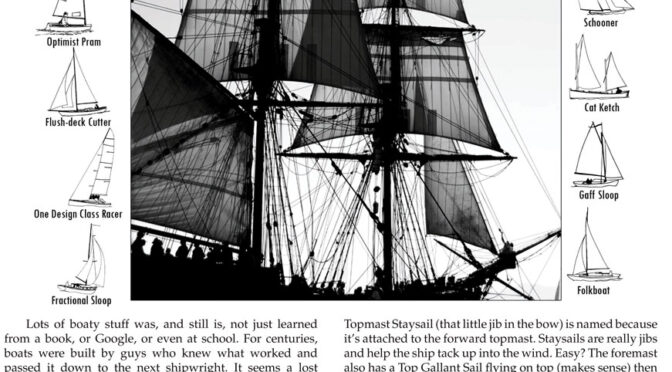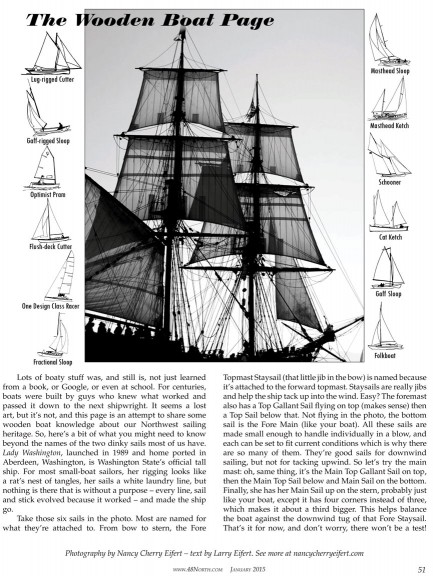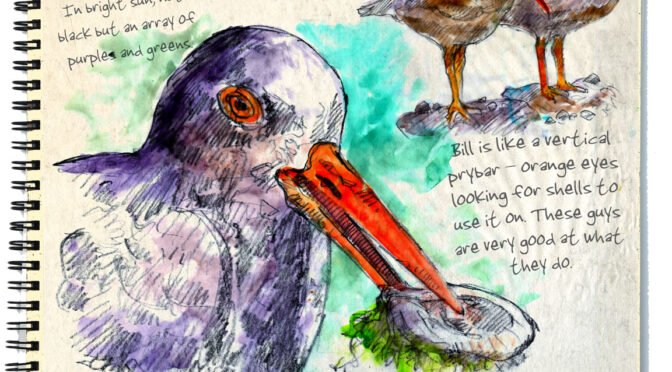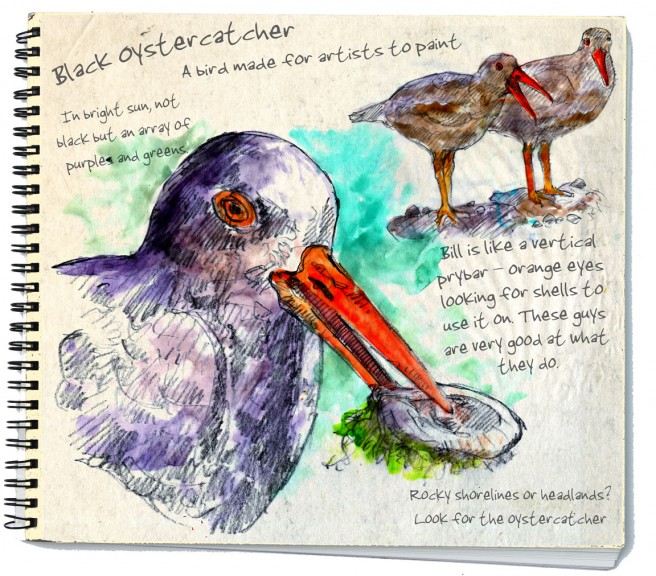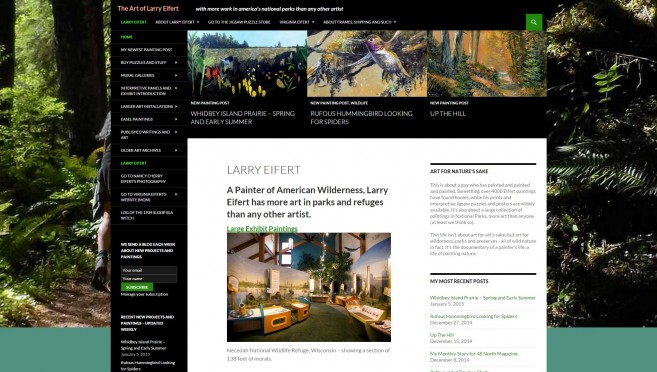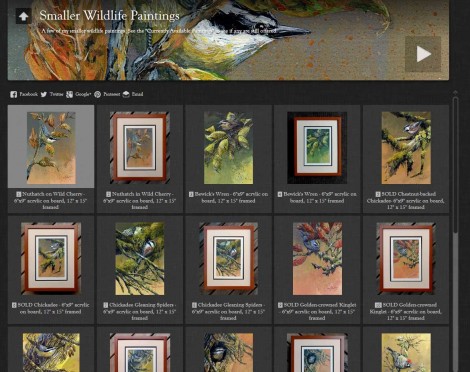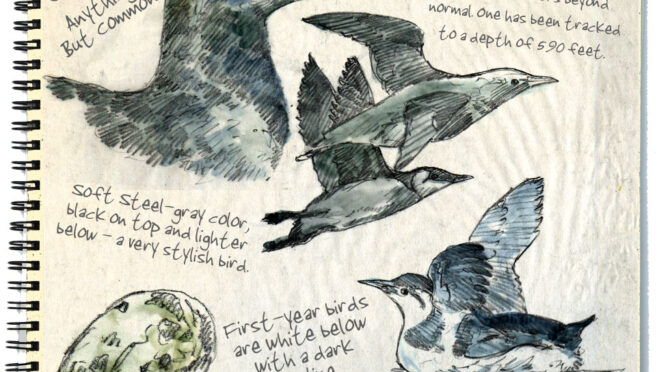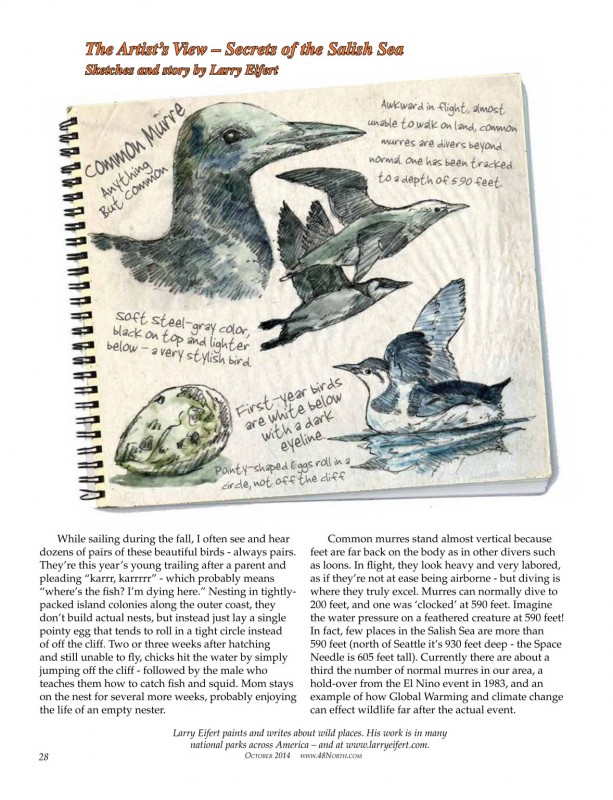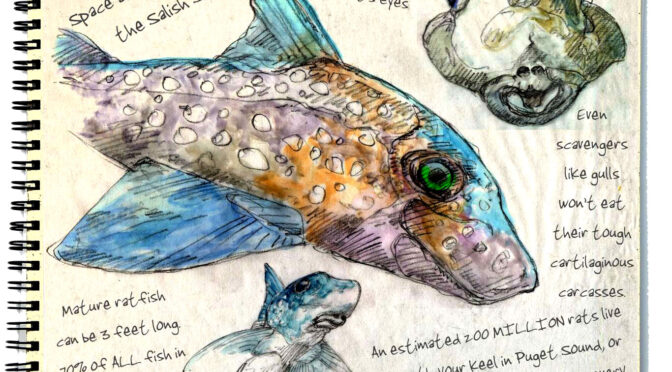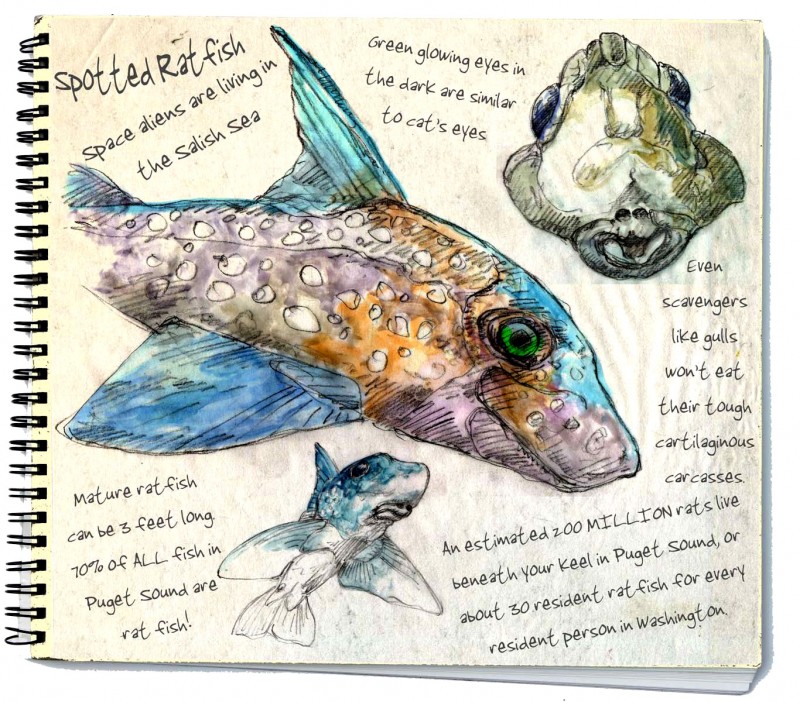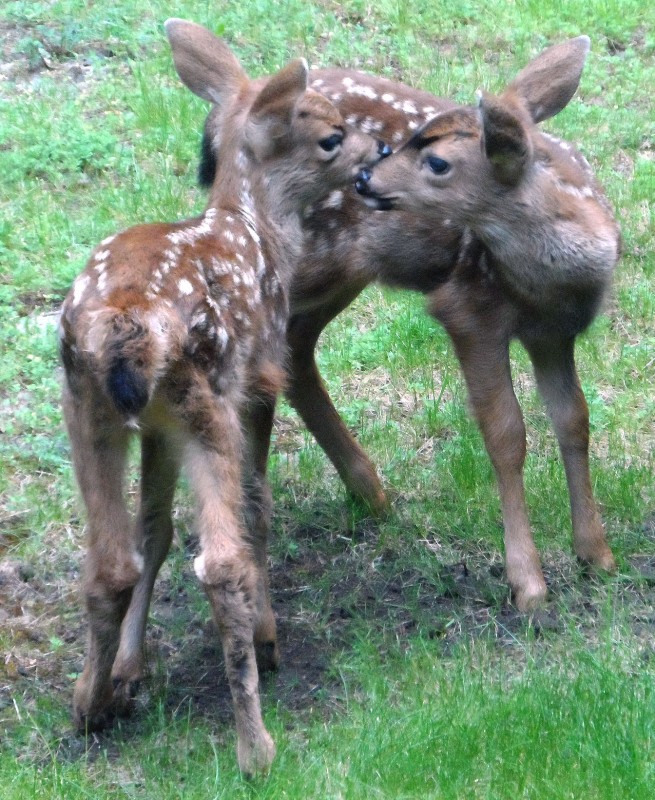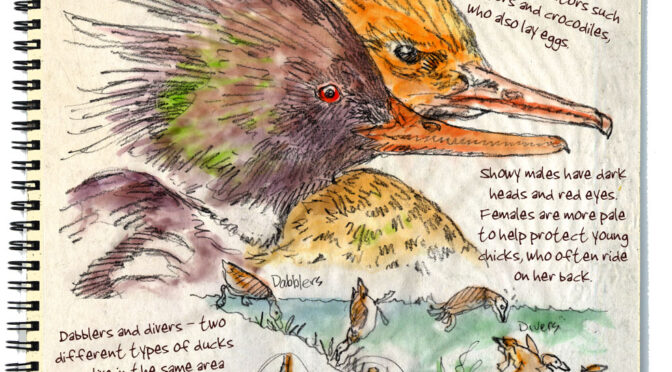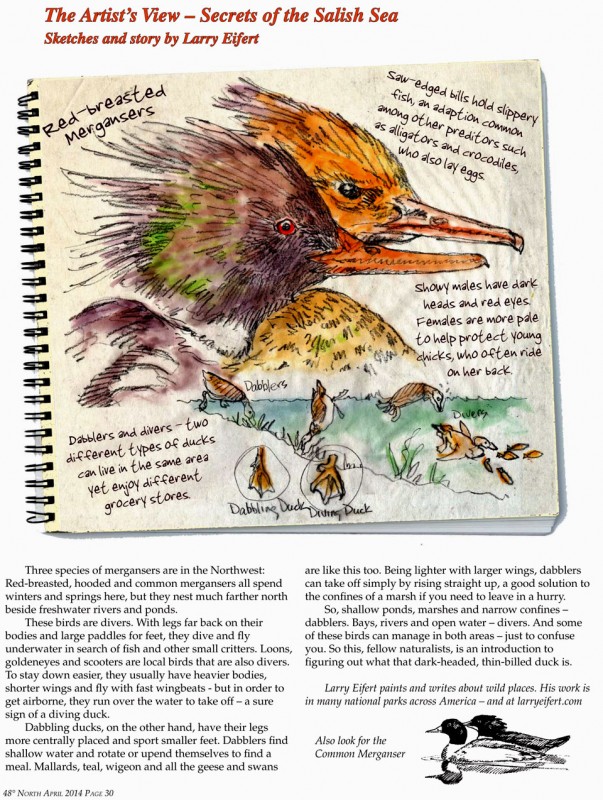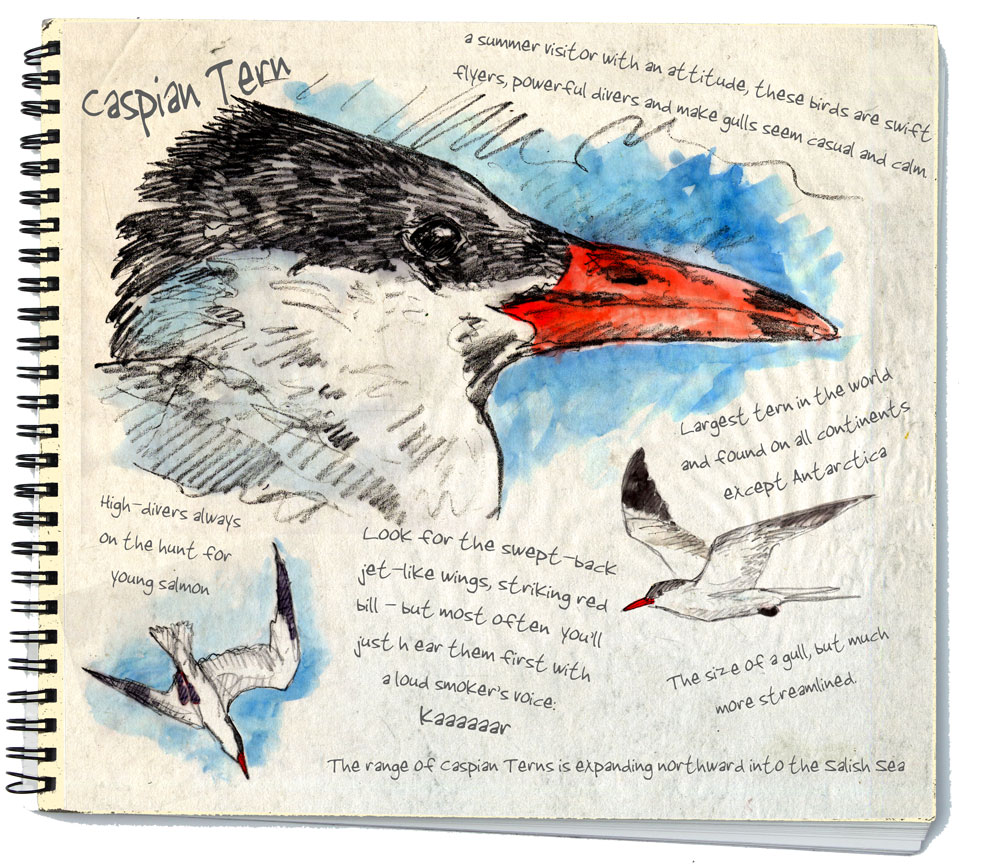
This month’s sketchbook and published story in 48 North magazine is about Caspian Terns. These few summer weeks are the only times I see these birds while I’m sailing about Port Townsend Bay. Actually, I almost always hear them first, then spot these big guys, and since I try to paint what I see, this was an easy choice for August.
Here’s the story:
This is a sound I hear often on quiet summer sails. Kaaaaarr – like a smoker attempting to clear a raspy throat. I instantly know that sound, and always turn and look up to find the hacker. Then, here it comes, flying fast and high, head down studying the water for a vague shape that indicates dinner. Seeing this, I know two things: it’s summer, and the Caspian Terns are back! I watch as the fast and effortless white bird glides past. Then, fish spotted, it goes into a corkscrew spiral, then into a dive and fully submerges – out the tern comes and quickly takes off with young salmon in mouth (unlike similarly sized gulls that are unable to truly dive).
Most Caspian Terns in Washington nest at the Columbia River estuary, and after family duties are over, both young and parents spread out to spend the summer fishing along the coast and into the Salish Sea. Their numbers are expanding, mainly due to dredged materials that offer new nesting islands, and since terns have a fondness for young salmon – well, you see the problem. Dredge the Columbia River estuary and suddenly you get more birds, the birds eat the salmon, we’re spending millions trying to save salmon. Some Caspian Terns in Washington are medium-distance migrants, wintering on the coast of California, while others travel greater distances, wintering as far south as Colombia and Venezuela. But between now and October when these elegant birds head south, I’ll enjoy them here very much indeed.
Larry Eifert paints and writes about wild places. His work is in many national parks across America – and at larryeifert.com.
Larry
Thanks for reading this week. Send this to someone who might appreciate what I’m painting and tell them to sign up. An email will work.
Larry Eifert
Here’s the blog on the web. And here’s my Facebook fan page. I post lots of other stuff there.
Click here to go to our main website – with jigsaw puzzles, prints, interpretive portfolios and lots of other stuff.
Nancy’s web portfolio of beautiful photographs
And Click here to go to Virginia Eifert’s website. Her books are now becoming available as Amazon Kindle books.
